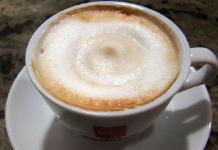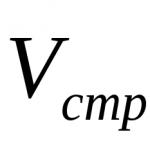The absence of a USP is a great grief for business. Look at these sites:


Apart from design, they are practically no different from each other - low prices, high quality and quick installation. It’s a pity for people who want to order suspended ceilings - they will have to spend more than one hour wading through the jungle of clone sites to find a worthwhile option.
Therefore, there must be something that makes the business stand out from the crowd - a unique selling proposition. This is what will make competitors fear you like fire, and potential clients more often make a choice in your favor.
By the way, his prices may be slightly higher than those of other companies: if you offer the buyer a product that will solve his problems, he will be willing to pay more for it.
There are only three “buts” - the USP works if it:
- unique- competitors do not offer this;
- specific- the user immediately understands what we are talking about;
- valuable- the potential client sees his benefit.
In 2014, we gave a general scenario according to which you can create a USP. Today we will share new formulas and practical examples to make it even easier to come up with or highlight a sentence.
Where to begin?
- What are your products made from?
- How exactly are products produced?
- What equipment do you use?
- What are the unique properties of the products?
- How do you interact with clients?
- How is work on an order structured?
- prices;
- availability of a loyalty program;
- delivery speed;
- courtesy of the staff;
- ease of ordering;
- regularity of promotions;
- guarantee period;
- possibility of deferred payment.
We analyze the target audience. What is good for an avid fisherman is not suitable for a young woman on maternity leave. Therefore, the development of a USP should begin with getting to know the target audience - what worries your potential clients, what problems and interests do they have?
Example: Let's say you need to come up with a USP for an online store of household goods. Most often, women buy household chemicals, dishes, decor, and other things. Those who have no time will order all this online - which means your main audience is working women aged 25 to 45 years. What might interest them? Surely they will like it if you deliver goods quickly and free of charge. Therefore, a good USP is “Free delivery within Irkutsk within 2 hours.”

Quite a good offer. But it can be strengthened - write how quickly the order will be delivered or indicate that delivery is 24 hours a day.
Underwater rocks
Remember: the target audience is not just gender, age, income level and other parameters. You need to realize what and to whom you are selling, what problems people are helping to solve: ideally, there should be a clear portrait of the buyer in your head.
We think about the specifics of the business. Perhaps a ready-made USP is right under your nose, you just need to notice it. To do this, honestly answer a few simple questions:
There is a chance that you will see an important advantage that will allow you to differentiate yourself from your competitors. By the way, sometimes you can make a USP out of a flaw: “Homemade baked goods with a short shelf life - only natural ingredients.”
Example: Let's say you are laser cutting metal. Terms, prices and delivery conditions are the same as those of other companies. But then you use a modern fiber-optic laser - it allows you to achieve maximum accuracy, up to 0.1 mm. Isn't this a USP? “Laser cutting accuracy up to 0.1 mm - we use the fiber optic installation Ruchservomotor LaserCut 3015.”

And this sentence can be strengthened - you can add how accurate the result is.
Underwater rocks
No one knows the features of a business better than its owner - so think and honestly answer the question of why you are cooler. A marketer or copywriter will help you get the trick out of the advantages.
We look at competitors. Conduct a detailed and objective analysis - compare your business and the offers of your main competitors. Here is a sample list of parameters for comparison:
You will get a clear picture - it will become clear in which parameters you are losing and in which you are superior to your competitors. The winning criteria can be taken as the basis for the site’s USP.
Example: Let's imagine that you are the owner of a tire store. Delivery takes from 1 to 7 days, because some of the items from the catalog are sold to order. There is no loyalty program yet, prices are the same as competitors. But everyone has a 1-3 year warranty, and you are ready to give an indefinite one - “Sale of tires with an indefinite warranty: free replacement in case of accidental damage.”
A good offer, don't you agree? The only thing you can do is work on its design - try to fit the title into 1 line, remove exclamation marks.
Underwater rocks
It is important not to want “like your competitors, only better” - if another company has a similar USP, what will prevent it from making it cooler than yours? For example, offer delivery in 30 minutes rather than 1 hour. Be objective and try to find something of your own.
We ask clients. If you have already had orders, ask why people chose your company. Sometimes clients can provide valuable tips.
By the way, it’s worth conducting such surveys from time to time: this will help improve the service and have a positive impact on the company’s reputation.
Example: Let's say you opened a beauty salon a week ago. You can ask employees to ask clients why they chose you. If clients say that your opening hours are convenient, make it your feature. Let the salon be open from 12:00 to 22:00, and not from 09:00 to 19:00 like everyone else nearby. USP: “A beauty salon with convenient opening hours: we are waiting for you every day from 12:00 to 22:00.”

A very good USP - few beauty salons can offer this.
Underwater rocks
It's hard to follow this advice if you haven't had any orders at all. But nothing is impossible - browse thematic forums, social networks, talk with potential clients. Your goal is to find out what attracts buyers.
After all this time-consuming work, you will have at least strong advantages, and at maximum an almost ready-made USP.
Aiming for the bull's eye: 5 formulas for creating a USP
Even a good advantage can be easily ruined if the thought is formulated incorrectly. Compare two offers: “Free delivery in Irkutsk in 2 hours” and “We are guaranteed to deliver your order within 2 hours. Delivery throughout Irkutsk." The meaning is the same, but the first one is read and perceived much easier.
To formulate a clear and beautiful USP, you can safely use one of the templates:

It is not necessary to follow the templates exactly. You can safely change any formula or come up with something completely new - it all depends on the specifics of the business. It is important to remember the client’s benefit: the main task is to show what exactly he will receive, and not what a white and fluffy company you have.
We look at the USP through the eyes of the client: 6 fatal mistakes
False statement. They distorted the facts or used criteria that should be the default. For example, the USP “Professional doctors with at least 3 years of experience” is not suitable for dentistry - this is what is expected from the clinic.
How to fix: look at the offer as a potential client. What do you expect from professional doctors? Surely correct and painless treatment. Try to put this idea into your USP. “Painless dental treatment with a 3-year guarantee - we employ professionals” - that’s better, isn’t it?
No benefit. They used dubious advantages. An online store of bed linen should not boast about its assortment: “Online store of bed linen “Sweet Dream” - we have 1,000 products.” There will always be a company that has even more products.
But if the assortment is truly unique, you can focus on it: for example, 10,000 handmade pots from craftsmen from all over the world. Just be careful - make sure that competitors do not offer this, and will not be able to offer it in the near future.
How to fix: find another advantage. Let's say you sell cotton bed linens. So highlight this - "Bedding for People with Sensitive Skin: Hypoallergenic Organic Cotton Sets."
Stamped. They chose a vague wording - “fast delivery”, “true professionals”, “highly qualified specialists”, “low prices”, etc. The list can be endless. Similar phrases are found on hundreds of websites, and people are so used to them that they simply don’t perceive them.
How to fix: add specifics - “Bouquets with delivery in 60 minutes”, “Porcelain tiles from 450 rubles. for 1 m² - we are an official dealer of 5 brands.” Prove your advantage with facts and deeds, and if it doesn’t work out, choose another USP.
Wrong accent. They talked about only one group of products, while there are ten of them.
For example: “Fast-drying nail polishes: refresh your manicure in 60 seconds.” It’s bad if, in addition to varnishes, you sell lipsticks, eye shadows and mascaras - they risk going unnoticed. If nail polishes make 80% of your profit, then it is acceptable to focus on them. When selling all cosmetics is interesting, you need to change your USP.
How to fix: formulate the USP for the online store as a whole. If there are too many product groups, focus on the service: “Decorative cosmetics with home delivery: we work around the clock.”
Too much volume. We tried our best and wrote a USP the size of a paragraph: “Solid wood tables from 3,895 rubles: prices are low because we produce furniture from our own materials - there is a sawmill and a carpentry shop in the north of the Irkutsk region. Find it cheaper - we’ll make a discount and refund the difference in cost.”
How to fix: cut mercilessly. One sentence is enough for the USP - “Solid wood tables from 3,895 rubles: we’ll refund the difference if you find it cheaper.” The rest of the information should be included in the paragraph below - after all, it is important to explain why your prices are so affordable.
Repeating after competitors. We saved time on analyzing competitors and received a clone - an identical or very similar offer. It's bad because all the work was done in vain.
How to fix: alas, ideally you need to start all over again - analyze your target audience, think about the features of your business and compare your online store with similar ones. If time is running out, try expanding your unsuccessful USP: replace “Online shoe store with delivery” with “Online shoe store with free delivery within 2 hours.”
Are there any errors found in the USP? It’s too early to rejoice - the offer may turn out to be ineffective, even if it seems very attractive to you.
How to find out if your USP will work
Answer a couple of questions to check the viability of the offer:
- Does the offer seem realistic? For example, the statement “Language school “Contact” - learn English in 1 hour” is very doubtful. But you can already believe this USP: “Language school “Contact” - English for holidays abroad in 5 hours.”
- The USP answers the question: why should you choose this one out of all similar offers? If yes, everything is fine.
You can also test your USP on clients - send out a newsletter with different options and choose the one that received the most responses. We sometimes use this option - by the way, have you subscribed to our newsletter? If not, then you are missing out on a lot of benefits.
Take the time to create a unique selling proposition - once you spend a few hours searching for the ideal, you will forever receive the key to the hearts of potential clients. If you need help, please contact us and we will create an effective proposal.
- How to understand which product characteristics to highlight in your unique selling proposition
- Creating a unique selling proposition: how often to update your USP
- Examples of a unique selling proposition: what to base it on if the product is no different from competitors’ offerings
Unique selling proposition It must still be considered a rather young phenomenon, which began to be used in Russian business from the beginning of the 2000s, when brands began to enter the market.
We have to admit that with a lot of talk about this issue, few are actually involved in the development of the USP. Most companies in Russia do not have a clear understanding of their target audience; as a result, they target everyone.
How often does a leader need to engage with or change company strategy? Most directors who have created successful businesses and management consultants agree on one thing: in modern times - constantly. A change in strategy is not an indicator of weakness, but, on the contrary, an indicator of the survivability of the company.
In the article we have collected four types of strategic approaches, their examples, as well as templates and tables for defining a company's strategy.
Without the ability to differentiate itself from its competitors, without the ability to highlight the features of its offer to customers, the company will be forced to limit itself to a rather modest flow of buyers and sales.
Algorithm for developing the correct USP
First step. Collection of primary information. You should draw up a table that will indicate the product characteristics and competitive advantages for the client that he receives through cooperation with your company. Experience confirms that the more written, the better. If you manage to write 15 competitive characteristics - excellent, 20 - even better. At the same time, you should describe all the benefits and benefits for customers, no matter how minor. After indicating your advantages, you should cross out those benefits that your competitors can offer. Our goal is to find and offer competitors those advantages that only we have.
Second step. Checking the relevance of benefits.
- Search engine query statistics. You should check each of the selected benefits using a search query to understand how often potential customers are trying to find a solution to a similar problem.
- Feedback cards. For loyal customers, you can offer to fill out feedback cards, highlighting the most important benefits.
- Open question. If it is not possible to achieve clear results by comparing your benefits with the benefits offered by competitors, sales staff and marketers should be instructed to ask loyal customers the question - “Why do you prefer to work with us?” The output may include quite a variety of answers, but the most common ones can be used for your USP.
- Sales analysis. This method was used to create a unique selling proposition for a garment factory. The head of the sales department noted the high demand for women's clothing in large sizes and clothing for plus-size women compared to other items in the company's assortment. This information formed the basis of a unique selling proposition: “Clothing for obese women. Our dresses, thanks to their special cut, allow you to hide your fullness and highlight the beauty of your figure - all your femininity.” This text was chosen for advertising when published in newspapers, magazines and other media. Over time, it was possible to confirm the excellent dynamics of the overall increase in the number of sales.
Third step. USP testing.
- Divide your customers into groups randomly, sending different types of messages to each group.
- Placement of contextual advertising based on various types of unique selling proposition. The main one becomes the USP option, which helped to achieve the maximum number of responses.
3 conditions for creating a unique selling proposition
To form a unique selling proposition, three conditions must be taken into account:
The first condition is to emphasize the uniqueness of your product. Quite a difficult question for many. In particular, how to emphasize the uniqueness of a standard washing powder? But in reality, you can highlight many characteristics of your product to attract the attention of your target audience - including:
- Useful additional service. “Buyers of goods for any amount are provided with free delivery within the city.” Or jewelry stores offer to “enter every date into the database so that the buyer does not forget to congratulate his beloved.”
- Polite and efficient staff. Probably, many have come across such advertisements - “we will wash your car in 20 minutes or return your money”, “only polite and sober movers”.
- Narrow specialization - “elite alcoholic beverages store” or “rock karaoke bar.”
- The company's focus on a specific category of clients. "Toy store for girls."
- Leading position in the market. "The largest selection of automotive components in the city." At the same time, it is important that the statement in the USP corresponds to reality in order to avoid negative consequences for the company’s reputation.
- Elitism - for example, a commercial photographer in his USP may indicate “shooting in luxurious interiors with expensive items.”
- High result. “85 of our students are employed within 3 months.”
- Providing guarantees to clients. Including refund or free service for a certain period. In any case, there will be returns, but for the most part they turn out to be isolated cases. If there is no way to keep this promise, it is better to change your unique selling proposition.
- Find out what your clients need. You can also think about a survey, or a study on finding the most interesting USP for the target audience will do.
- The USP should be aimed not at the users themselves, but at decision makers.
- Compare your services or products with your competitors. For example, one of the washing powders gained its fame thanks to the motto “If there is no difference, then why pay more?”
- Reduce the cost to a negligible amount. For example, “advertising in our newspaper – 600 rubles. per month. Advertising is published three times a week - 12 times a month. Therefore, one publication will cost only 50 rubles. 20 thousand subscribers will be able to see this advertisement - so for each client you pay only 0.25 kopecks.”
- Express the cost in non-financial terms. In particular, one of the coupon services sends out offers to its customers - “give your beloved a festive bouquet of roses, a romantic evening and two movie tickets for the price of a tank of gas.”
False unique selling propositions
- Obvious promises. “If you don’t like the product, we promise to refund your purchase within 14 days.” But such a promise cannot be considered a unique selling proposition, because it is a mandatory requirement under the Law “On the Protection of Consumer Rights.”
- An imaginary advantage. Among the most striking examples are “cholesterol-free vegetable oil” (only animal fats can contain cholesterol) and “non-GMO salt.”
- A contrast based on a play on words. “Smoke Cool - give up hot cigarettes.” Cool cigarettes are contrasted with other brands and supposedly differ in temperature characteristics. It’s just that in the slogan the main emphasis is on the play on words ( English cool - “cool, cool”).
The second condition is that the client must understand his benefit. The properties specified in the unique selling proposition must meet the needs of the buyer. It is necessary to clearly show what benefits the client will receive, noting other important qualities:
- Saving powder when washing. It is easier to rinse and does not harm the skin.
- More washes for the same price.
- Compact thresholds are environmentally friendly, reducing environmental impacts.
The complex of benefits, if not limited to just one benefit, allows you to interest a wider target audience - those who want to save money, those who care about their skin, and those who are concerned about the environmental situation in the world.
- Commercial proposal: samples and examples. 16 Killers and Boosters Everyone Needs to Know

General Director speaks
Evgeny Panteleev, General Director of the Svoboda cosmetics association, Moscow
Our company is launching a new line of cosmetic products this year. The USP includes the principle of quality-price ratio - the product is presented in the mass market price category, and in terms of characteristics and composition it is more reminiscent of products from the world's leading brands. Let's take a closer look at how this USP of our cosmetic products came about.
The company celebrated its 170th anniversary in 2013, and in preparation for such a significant date, it decided to send employees to participate in the major French exhibition In-Cosmetics. There we were able to meet the heirs of the founder of our company, many hereditary perfumers. They introduced us to many representatives of French laboratories who specialize in new areas in the field of cosmetology, and significantly helped us in organizing negotiations. We were particularly interested in the developments of the Soliance laboratory - its representatives offered us exclusive terms for the supply of a component with a unique anti-aging effect (hyaluronic acid microsphere). The use of this component has already been envisaged for leading cosmetic products, including in the range of famous world brands YvesRocher, L’Oreal and Clarins.
In addition to the exclusive right to use this microsphere for our cosmetic line, we were also able to count on comprehensive methodological support from business partners from France. They provided assistance in the formation of new SKUs, and our company’s research center also created its own recipes. This approach allowed us to provide our first USP - the high quality of our products. There were also additional arguments in favor of our line - the results of testing the quality of competitors' products, which we organized at the research center. Based on the results of the past study, it was possible to confirm that our product is not inferior in its properties to more expensive analogues.
The second component, cost, also deserves special attention. When it comes to price, our USP has a certain “immunity”. Because we received an exclusive opportunity from the French developer to use his know-how - a microsphere of hyaluronic acid. Therefore, it is unlikely that any of the Russian manufacturers will be able to compare with our prices, and foreign analogues turn out to be much more expensive.
Alexey Pyrin, General Director of Artisifood, Moscow
We are engaged not only in production, but also in sales of fish and seafood. We focus our activities on the b2b sector. As a rule, wholesale food suppliers do not have a well-known, recognizable brand, so it is really difficult to stand out from your competitors. We decided to take the factor of an extensive range as the basis for promoting our services. The vast majority of companies offer a little of everything; they cannot deliver rare products. We have managed to significantly expand the range of our services - about 200 types of seafood and fish, while informing clients about various unusual products. Therefore, we managed to surpass our competitors in terms of USP margin by 8-10%.
The third condition is the significance of the promised benefit. We only have ten seconds to interest a potential client. Therefore, if there is a more significant problem that we propose to solve for the client, with the most clear and accessible formulation of our proposal, we will be able to make the brand more recognizable and well-known to potential clients. This rule is relevant almost everywhere - the only exception is complex equipment (as a rule, consumers analyze and compare characteristics in advance).
In the FMCG market, it is necessary to determine the most significant property, which will be recorded in the unique selling proposition and on packaging. In particular, on the packaging you can note the pleasant aroma of the product. Over time, this property began to be taken for granted, so we moved on to “effective stain removal.” The heroes of our commercials could get very dirty, but no dirt could withstand the effects of the powerful powder. As a result, we managed to achieve sales growth of more than 5 times over five years.
- Private label products: what buyers are willing to pay their money for
Is your product's unique selling proposition effective: three things to check
Ilya Piskulin, Director of Love marketing agency, Moscow
Try, for example, creating an “antonym” to your unique selling proposition.
1. Your unique selling proposition cannot be used by competitors
If competitors repeat your offer, they will deceive the client. Once in my practice there was a case. One of our companies began to produce windows with a ventilation system. A competing company said that their windows are also ventilated. We sent a secret buyer to them and discovered that we were talking about valve ventilation, which only works at positive temperatures and is not installed in Russia. The company knew about this and therefore immediately warned clients that they should not buy windows with ventilation. That is, the company attracted customers by not intending to sell. Of course, the buyers were disappointed. There was no other competitor on the market that could repeat our USP and at the same time keep its promise.
Examples of USP. The restaurant is the only one in the area that prepares dishes on the grill or serves a business lunch in 20 minutes. The window production company is the only one of its kind that produces metal siding to look like logs. Production of road paint that glows in the dark. A development company can offer a lake on the territory of a holiday village or an already operating gas supply system in a new house.
If competitors repeat your offer, they will violate their positioning. I once watched the death of a grill bar. At first it positioned itself as an extreme bar, but unexpectedly announced that it was starting to hold children's matinees on Sundays. The regulars were at a loss, and new clients (young mothers with children) did not dare to go to an incomprehensible establishment. It is important that the USP reflects your positioning and does not suit your closest competitors.
Examples of USP. If BMW had announced that it had produced the safest car, it would have caused confusion among car enthusiasts (safety is a familiar attribute of Volvo). The announcement that the Gipsy nightclub will host the Chanson radio festival will sound just as strange.
2. You can build a reverse USP without it seeming absurd.
Often, instead of a USP, people say self-evident things about high quality, excellent prices and a wide range. In my practice, there was a company that publicly declared that it had the most expensive apartments in the city. Sales were going great (note, this was before the crisis). At the same time, another company was operating on the market, which claimed that it had the cheapest apartments. And they sold great too. Both USPs sounded good and worked. If the USP does not have a working “antonym”, then it will not be very effective. So, in my practice there was a cottage community that sold the largest plots, measured in hectares. Unfortunately, there was no company on the market that sold the smallest plots, for example 10 acres, because no one needed them anymore. Sales were not going well... You shouldn’t write in an advertisement for a club that it has excellent music (there is hardly a club with terrible music) or emphasize in an advertisement for a restaurant that there is delicious food and good service.
Examples of USP. In advertising a restaurant, it is better to write “located on the roof, far from the bustle of the city” instead of “located in an excellent location” (because you can say the opposite - “a restaurant in the very center of the city”, and this will also be a good USP).
3. You want to believe your USP
It happens that the USP is formulated either unclearly, or incomprehensibly, or simply does not inspire confidence. We once promoted lymphatic drainage massage, which, when used correctly, can create the effect of slight weight loss immediately after the session. It turned out that people did not really believe the slogan “losing weight in 1 hour,” unlike the slogan “losing weight in 1 day” (there were many times more clicks).
USP example. You should not promise “lose 10 kilograms in 3 days”; indicate a more realistic time frame.
Marketer Andrey Zinkevich - on how to effectively differentiate yourself from competitors
If you open any good book on marketing or attend relevant training, there is a 99% chance that you will come across the term “unique selling proposition.” Why do all marketers talk about the importance of USP? It would seem that the answer is obvious: show the potential client the differences between the product and the benefits of using it, and he will make a purchase. But here lies the main pitfall: how to identify those unique differences and how to present them in the form of benefits? What if your product or service is no different from your competitors? Well-known marketer Andrei Zinkevich spoke about how to formulate a USP.
Andrey Zinkevich, entrepreneur, marketing consultant. Founder of the project . The geography of clients includes 9 countries. More than eight years of experience in sales and marketing at Kimberly Clark and Biosphere Corporation. Author of the booksCustomer pipeline », « Secrets of customer focus" And " Profitable Internet projects ».
Background
Reeves was one of the most prominent students of the famous Claude Hopkins and was an adherent of the “selling” style. He believed that advertising could only have one purpose - sales. Not loyalty, not recognition, not popularization and other terms so beloved by advertisers, but sales!
In his book, Reeves emphasized that the effectiveness of advertising (read: sales) depends on one factor: advertising must instantly capture the attention of a potential client with the help of one, but very strong offer that competitors cannot make; offers that will encourage the recipient of the advertisement to perform a targeted action.
This idea formed the concept that Reeves called the “unique selling proposition.” True, today Reeves’ concept is overgrown with implausible myths; one of them is that now the competition is much stronger and it is almost impossible to find differences between competitive products.
Is it really? Of course not. Look at most well-known brands or companies, they all have a unique selling proposition and stand out because of it.
Let's try to figure out how to highlight the distinctive qualities of your products and services and turn them into a USP.
Step-by-step instructions to create a unique selling proposition
Step one is to determine the most important characteristics for our customers in our products.
The first step in preparing a unique selling proposition is the selection of product characteristics or criteria that influence the client's decision making.
This step is the most important (although it is often simply skipped), since the fate of the USP depends on the selected characteristics: will it really show the benefits of your product or will it compare you “with the rest”.
Therefore, our task at the first stage is to analyze our products or services and determine the ten most important characteristics for clients in each of them. The best way to do this is to ask existing customers what product features are most important to them and what criteria/factors influence their purchasing decision.
If the customer base is too large, then it is advisable to select a sample of the most loyal or most profitable customers and survey them.
If you are launching a new product and there are no clients yet, then you can brainstorm and independently determine the characteristics that are most important to the client. Or survey those who are most likely to become buyers of your product.
After real clients appear, you can repeat the analysis and select characteristics based on real data.
You need to record all responses received from respondents in a separate file.
Step two - filter and rank the received data.
After feedback from clients has been received or brainstorming has been carried out, our task is to select the 10 most important characteristics for the client and rank them in order of importance.
It's not difficult to do this. Among all the answers received, we need to select those that are repeated more often than others. The characteristic with the most repetitions will top your list, the rest will be located below it according to the same principle. As a result, we should have a table approximately like this (for example, we will have in mind a hypothetical online store):

Why do I recommend limiting yourself to 10 characteristics? A larger number may simply confuse you and make it difficult to analyze. In most cases, you will notice that the most important characteristics for the client will be no more than 5-7.
Step three - compare ourselves with three main competitors.
The next step is to compare the obtained characteristics of your product with three competitive ones. When conducting such an analysis, you must be as objective as possible: if you are inferior to a competitor in something, be sure to note this.
I recommend rating each selected characteristic or criterion for your product and for each of your competitors on a 10-point scale. For example, in the previous table we determined that the most important factor for a customer is intraday delivery. If we can deliver the product within a few hours after ordering, we can give a rating of 10, if not, we lower the rating. Next, we analyze competitors and note how quickly they are able to organize delivery. The longer the delivery time, the worse the rating for this criterion will be.

Step 4 - choose criteria for USP: what are we stronger at.
Having carried out such an analysis, we get a clear picture: in what characteristics or criteria that are important for the client we are superior to our competitors, and in what areas we are objectively inferior. The criteria by which we dominate and should form the basis of our USP.

Key rule: for each service, product or company as a whole, a separate unique selling proposition is created!
Auxiliary formulas for creating USP
Now let's figure out how to formulate a unique selling proposition based on the selected characteristics. I suggest using one of three formulas.
Formula one: need + result + guarantees. Using this formula, we guarantee the potential client that we can satisfy his need better than others. Here is an example of a USP based on this formula for our hypothetical online store: “We will deliver your order within a day or return your money!”
This formula is used by my partner Ilya Rabchenko, general director of the SMOpro studio, to create a USP for his services. This is what the unique selling proposition for the service “Attracting subscribers to a group on VKontakte and Odnoklassniki” looks like: “We are guaranteed to attract 1000 targeted subscribers within the first month according to the parameters you set, or we will return your money!”
Formula two: important criterion/characteristic + need. The second formula is based on a combination of characteristics that are important for a potential client and his needs. Some banks use a good example for such a USP:
“We’ll apply for a loan in 5 minutes without proof of income.” Applying for a loan is a need of the target audience. The absence of the need to provide a certificate of income and the speed of loan issuance are important criteria for a potential client that influence his decision.
Formula three: target audience + need + solution. Famous business coach Alex Levitas likes to use this formula. For himself as a consultant, he uses the following unique selling proposition: “I - Alexander Levitas - help owners of small and medium-sized businesses increase their net profit with the help of low-budget and free marketing techniques” . In Alex's USP, the target audience is small and medium-sized business owners. Their need is to increase net profit. The solution Alex proposes is the use of low-budget and free marketing tools (read: the use of guerrilla marketing tools).
False unique selling propositions
I would also like to mention false USPs. Unfortunately, many entrepreneurs and marketers are guilty of this.
What is a false USP? This is a proposal based on misinterpretation of facts or the use of criteria in the USP that a potential client expects by default.
For example, a dental clinic cannot use the characteristic “professionalism of doctors” as its USP. Why? Because, by default, a potential client expects that you have professional doctors. Otherwise, why would he even contact you?
Second example: using a 14-day money back guarantee as a USP. According to the Law “On the Protection of Consumer Rights”, the buyer already has every right to return the product within 14 days from the date of purchase. Therefore, there is a distortion of facts here.
Test questions to check the USP
After you have worked with the comparative characteristics template and created a unique selling proposition, one question remains: how “workable” is it? Isn't it false?
You can test yourself with the question (your USP should answer it): “Why should I choose your product or service among all the offers available to me?”
The second option is to formulate your USP in the form of a phrase: “Unlike others, we…”.
If both security questions have good answers, then you have truly created a unique selling proposition.
- High functional significance of the product. The consumer needs to be told exactly what problem he will solve by purchasing this product. The achievement of the goal after using the product should be clearly highlighted to instantly attract attention.
- The advantage of being unique among competitors. Developing an offer that is not offered by other companies on the market will help you win the competition. You can stand out by the quality of service, delivery, as well as additional conditions.
- Target audience orientation. A segment of potential consumers should be clearly defined and a marketing program should be carried out based on the behavioral characteristics of this group of people, including their gender, age, lifestyle and basic preferences. It is especially important to think through the logistics of placing retail outlets, as well as their operating hours.
Types of unique selling proposition: true and false
A unique selling proposition should highlight the visible benefits of a product, even if they are not directly present in the product itself. The advertising move should attract the buyer and inspire confidence. Not all products are new in their field, so 2 types of USP are used for advertising.
True USP is based on drawing attention to the special characteristics of the product that really exist and are an advantage over competitors. Market leaders Apple take advantage of this when advertising new flagship technologies.
False USP is aimed at creating the image of the product and does not directly concern its properties. An example would be the Ariel ad “Cleans what others can’t.”


















